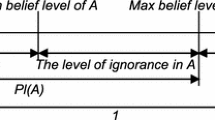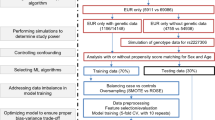Abstract
Several risk factors associated with the increased likelihood of healthcare-associated Clostridium difficile infection (CDI) have been identified in the literature. These risk factors are mainly related to age, previous CDI, antimicrobial exposure, and prior hospitalization. No model is available in the published literature that can be used to predict the CDI incidence using healthcare administration data. However, the administrative data can be imprecise and may challenge the building of classical statistical models. Fuzzy set theory can deal with the imprecision inherent in such data. This research aimed to develop a model based on deterministic and fuzzy mathematical techniques for the prediction of hospital-associated CDI by using the explanatory variables controllable by hospitals and health authority administration. Retrospective data on CDI incidence and other administrative data obtained from 22 hospitals within a regional health authority in British Columbia were used to develop a decision tree (deterministic technique based) and a fuzzy synthetic evaluation model (fuzzy technique based). The decision tree model had a higher prediction accuracy than that of the fuzzy based model. However, among the common results predicted by two models, 72 % were correct. Therefore, this relationship was used to combine their results to increase the precision and the strength of evidence of the prediction. These models were further used to develop an Excel-based tool called C. difficile Infection Incidence Prediction in Hospitals (CDIIPH). The tool can be utilized by health authorities and hospitals to predict the magnitude of CDI incidence in the following quarter.








Similar content being viewed by others
References
Agwa A, Leheta H, Salem A, Sadiq R (2013) Fate of drilling waste discharges and ecological risk assessment in the Egyptian Red Sea: an aquivalence-based fuzzy analysis. Stoch Environ Res Risk Assess 27:169–181. doi:10.1007/s00477-012-0574-0
Barbut F, Jones G, Eckert C (2011) Epidemiology and control of Clostridium difficile infections in healthcare settings: an update. Curr Opin Infect Dis 24:370–376
Borriello SP (1998) Pathogenesis of Clostridium difficile infection. J Antimicrob Chemother 41(Suppl C):13–19. doi:10.1093/jac/41.suppl_3.13
Brown KA, Fisman DN, Moineddin R, Daneman N (2014) The magnitude and duration of Clostridium difficile infection risk associated with antibiotic therapy: a hospital cohort study. PLoS ONE 9:1–9. doi:10.1371/journal.pone.0105454
Chen S-J, Hwang C-L (1992) Fuzzy multiple attribute decision making: methods and applications. Springer, Berling
Cheng CH, Lin Y (2002) Evaluating the best main battle tank using fuzzy decision theory with linguistic criteria evaluation. Eur J Oper Res 142:174–186. doi:10.1016/S0377-2217(01)00280-6
Chu T (2011) Evaluating consulting firms using a centroid ranking approach based fuzzy MCDM method, pp 112–118
Cohen SH, Gerding DN, Johnson S et al (2010) Clinical practice guidelines for Clostridium difficile infection in adults: 2010 update by the Society for Healthcare Epidemiology of America (SHEA) and the Infectious Diseases Society of America (IDSA). Infect Control Hosp Epidemiol 31:431–455. doi:10.1086/651706
Dubberke ER, Olsen MA (2012) Burden of Clostridium difficile on the healthcare system. Clin Infect Dis 55(Suppl 2):S88–S92. doi:10.1093/cid/cis335
Dubberke ER, Yan Y, Reske KA et al (2011) Development and validation of a Clostridium difficile infection risk prediction model. Infect Control Hosp Epidemiol 32:360–366. doi:10.1086/658944
Dubberke ER, Carling P, Carrico R et al (2014) Strategies to prevent Clostridium difficile infections in acute care hospitals: 2014 update. Infect Control Hosp Epidemiol 35:628–645. doi:10.1086/676023
Faybishenko B (2010) Fuzzy-probabilistic calculations of water-balance uncertainty. Stoch Environ Res Risk Assess 24:939–952. doi:10.1007/s00477-010-0379-y
Garey KW, Dao-Tran TK, Jiang ZD et al (2008) A clinical risk index for Clostridium difficile infection in hospitalised patients receiving broad-spectrum antibiotics. J Hosp Infect 70:142–147. doi:10.1016/j.jhin.2008.06.026
Gravel D, Miller M, Simor A et al (2009) Health care-associated Clostridium difficile infection in adults admitted to acute care hospitals in Canada: a Canadian Nosocomial Infection Surveillance Program Study. Clin Infect Dis 48:568–576. doi:10.1086/596703
Lee CC (1990a) Fuzzy logic in control systems: fuzzy logic controller—Part I. IEEE Trans Syst Man Cybern 20:404–418. doi:10.1109/21.52551
Lee CC (1990b) Fuzzy logic in control systems: fuzzy logic controller—part II. IEEE Trans Syst Man Cybern. doi:10.1109/21.52552
Lessa FC, Gould CV, McDonald LC (2012) Current status of Clostridium difficile infection epidemiology. Clin Infect Dis 55(Suppl 2):S65–S70. doi:10.1093/cid/cis319
Liou YT, Lo SL (2005) A fuzzy index model for trophic status evaluation of reservoir waters. Water Res 39:1415–1423. doi:10.1016/j.watres.2005.01.014
Lu R-S, Lo S-L, Hu J-Y (1999) Analysis of reservoir water quality using fuzzy synthetic evaluation. Stoch Environ Res Risk Assess 13:327. doi:10.1007/s004770050054
Perelle S, Gibert M, Bourlioux P et al (1997) Production of a complete binary toxin (Actin-specific ADP-ribosyltransferase) by Clostridium difficile CD196. Infect Immun 65:1402–1407
Quinlan JR (1986) Induction of decision trees. Mach Learn 1:81–106. doi:10.1007/BF00116251
Rapidminer (2014) RapidMiner: operator reference manual. Rapidminer, Boston
Rokach L, Maimon O (2005) Decision trees. In: Data mining and knowledge discovery handbook, pp 165–192
Sadiq R, Rodriguez MJ (2004) Fuzzy synthetic evaluation of disinfection by-products: a risk-based indexing system. J Environ Manage 73:1–13. doi:10.1016/j.jenvman.2004.04.014
Sadiq R, Husain T, Veitch B, Bose N (2004) Risk-based decision-making for drilling waste discharges using a fuzzy synthetic evaluation technique. Ocean Eng 31:1929–1953. doi:10.1016/j.oceaneng.2004.05.001
Sadiq R, Rodriguez MJ, Imran SA, Najjaran H (2007) Communicating human health risks associated with disinfection by-products in drinking water supplies: a fuzzy-based approach. Stoch Environ Res Risk Assess 21:341–353. doi:10.1007/s00477-006-0069-y
Sevkli M (2010) An application of the fuzzy ELECTRE method for supplier selection. Int J Prod Res 48:3393–3405. doi:10.1080/00207540902814355
Simor AE, Williams V, McGeer A et al (2013) Prevalence of colonization and infection with methicillin-resistant Staphylococcus aureus and vancomycin-resistant Enterococcus and of Clostridium difficile infection in Canadian hospitals. Infect Control Hosp Epidemiol 34:687–693. doi:10.1086/670998
Starr JM, Campbell A (2001) Mathematical modeling of Clostridium difficile infection. Clin Microbiol Infect 7:432–437. doi:10.1046/j.1198-743X.2001.00291.x
Tan P-N, Steinbach M, Kumar V (2006) Classification: basic concepts, decision trees, and model evaluation. In: Introduction to data mining, pp 145–205
Tanner J, Khan D, Anthony D, Paton J (2009) Waterlow score to predict patients at risk of developing Clostridium difficile-associated disease. J Hosp Infect 71:239–244. doi:10.1016/j.jhin.2008.11.017
Zadeh L (1965) Fuzzy sets. Inf Control 353:338–353
Acknowledgments
We acknowledge the financial assistance of the Interior Health Authority (IHA), Kelowna, BC and the Natural Sciences and Engineering Research Council of Canada (NSERC) for this research work.
Author information
Authors and Affiliations
Corresponding author
Ethics declarations
Conflict of interest
The authors declare that they have no conflict of interest.
Rights and permissions
About this article
Cite this article
Chhipi-Shrestha, G., Mori, J., Hewage, K. et al. Clostridium difficile infection incidence prediction in hospitals (CDIIPH): a predictive model based on decision tree and fuzzy techniques. Stoch Environ Res Risk Assess 31, 417–430 (2017). https://doi.org/10.1007/s00477-016-1227-5
Published:
Issue Date:
DOI: https://doi.org/10.1007/s00477-016-1227-5




